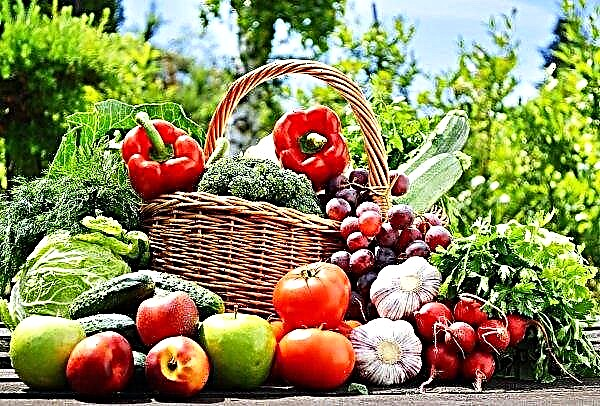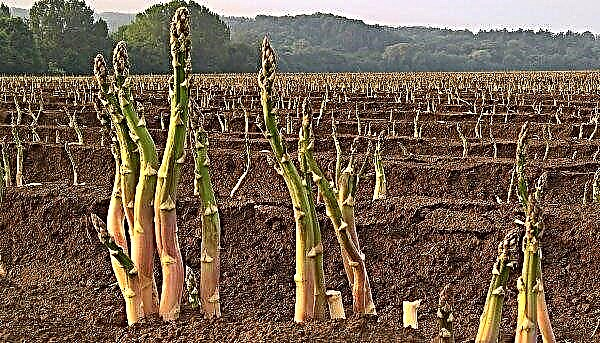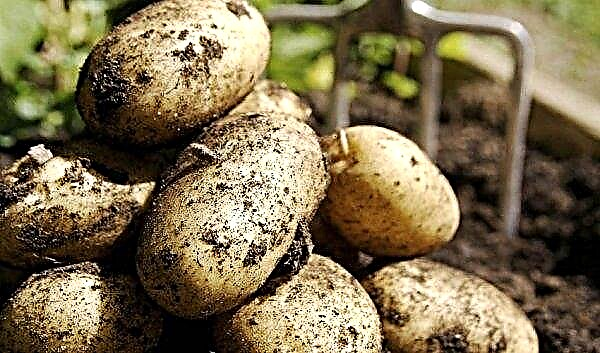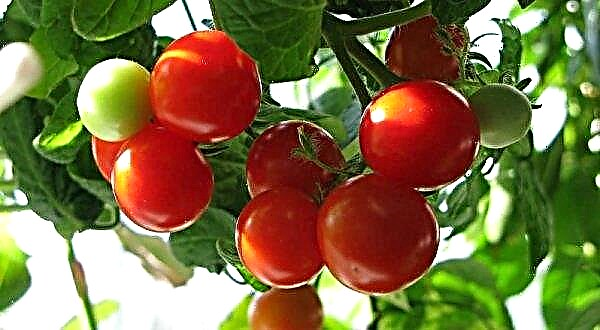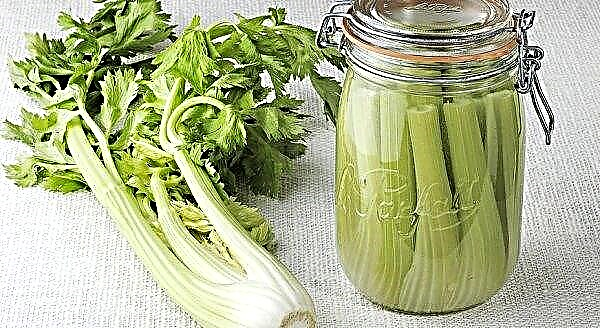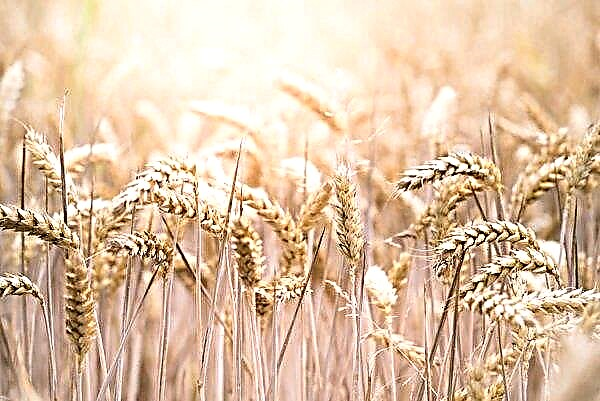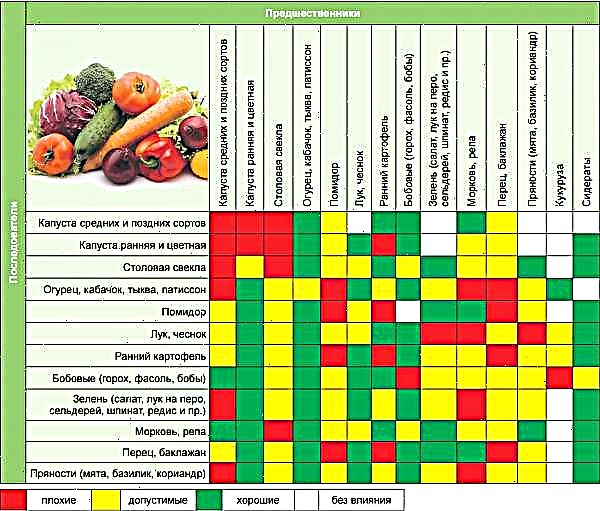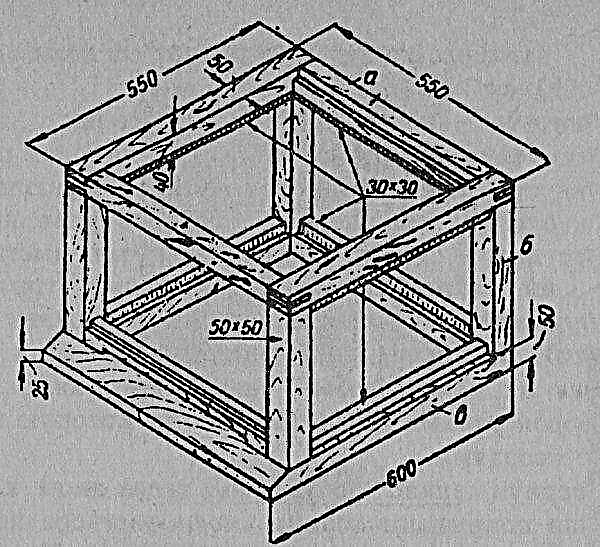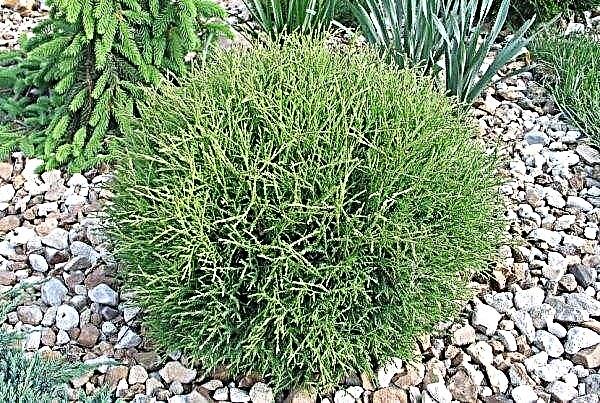The main element of proper flight management is the successful organization of bee wintering. This process will minimize the loss of the number of striped insects and may contribute to increased productivity in the new season.
Features and types of wintering in the greenhouse
Experienced beekeepers can provide wintering for bees in different ways. In regions with unpredictable climatic conditions, it is advisable to use polycarbonate greenhouses, which allow you to control the condition of bee colonies during winter sleep. Wintering of bees can be of two types - in nature and using special constructions (winter houses). In such structures, insects are placed if the apiary is in a harsh climate. This design is least susceptible to wear and is able to create favorable conditions for wintering. There are two ways to organize a wintering process in a greenhouse. The first of them provides for the placement of insects in polycarbonate greenhouses, and the second - in an improved greenhouse. The most common wintering ground is a greenhouse constructed from polycarbonate.
This design is least susceptible to wear and is able to create favorable conditions for wintering. There are two ways to organize a wintering process in a greenhouse. The first of them provides for the placement of insects in polycarbonate greenhouses, and the second - in an improved greenhouse. The most common wintering ground is a greenhouse constructed from polycarbonate.
Did you know? The average bee family consists of approximately 50 thousand individuals. They are able to explore 12 hectares in 1 day.
There is nothing wrong with using the first option, but it must be remembered that in the spring such a structure will quickly heat up, and at temperatures above + 10 ° C, insects will start to fly out of the shelter and it will be difficult to lure them back. In the second version, it is advisable to cover the polycarbonate greenhouse in the winter with a roofing material, which in the spring will prevent temperature fluctuations indoors.
Pros
- Placing bee families in a polycarbonate greenhouse has several advantages, including:
- reasonable price and assembly portability;
- saving weak families from death in regions with a mild climate;
- comfortable conditions for the care of hives in the winter;
- protection of insects from external stimuli;
- ensuring the optimal temperature and the necessary humidity.
Minuses
The disadvantages of wintering bees in the greenhouse can only be attributed to the fact that it should be under the constant supervision of the beekeeper. This option is suitable for those who live next to the greenhouse.
Preparatory work and care features
Preparing bee families for wintering is an important and time-consuming process. The survival of insects and the success of further seasons of honey collection depend on it. In this regard, the beekeeper is recommended to ensure a decent wintering of bees without losing members of their family.
The beekeeper should adhere to such stages:
- Cooking quality feed.
- Increase the strength of the bee family.
- Formation of the nest and compliance with the necessary conditions for the maintenance of families.
Important! It is impossible to prevent hypothermia of bees and the formation of drafts, which can lead to the death of a bee club.
Greenhouse heating
For maximum comfort in winter, hives should be prepared and insulated. The beekeeper is obliged to take care of the safety of his charges in advance. If an open type was chosen for wintering, then the hive should be insulated around the entire perimeter. To do this, you can use dry fodder, grass and polystyrene. To reduce temperature fluctuations in the greenhouse, the structure should be covered with roofing material.
Ventilation
The use of ventilation in the greenhouse is necessary to maintain the temperature regime. To regulate the heat inside the winter house, it is recommended to use a door and a ventilation window. Overheating is contraindicated by insects, so it is recommended to ventilate the room on warm days.
Important! In its physicochemical parameters, light honey is the best option for its feeding in the winter. Due to the rapid crystallization, dark varieties will have a negative effect on the bees.
Air humidity
Humidity in the winter is measured by a psychrometer. If this device is not available, then you can use two identical thermometers and calculate this indicator yourself. The optimum humidity in the greenhouse should be 75–85%. In winter, all the necessary moisture is obtained from bee feeding. You can adjust its level using temperature control and ventilation. To reduce dampness in the greenhouse, you can also use ordinary rock salt or quicklime, otherwise the bees should be relocated to another empty greenhouse. At the end of winter, insects form a brood, which leads to an increase in food consumption. In this regard, the temperature rises in the greenhouse. To reduce it in the doorways, it is recommended to install the grilles, and at night you should open the door.
To reduce dampness in the greenhouse, you can also use ordinary rock salt or quicklime, otherwise the bees should be relocated to another empty greenhouse. At the end of winter, insects form a brood, which leads to an increase in food consumption. In this regard, the temperature rises in the greenhouse. To reduce it in the doorways, it is recommended to install the grilles, and at night you should open the door.
Methods of feeding bees in winter
In order for individuals to successfully survive the wintering and survive, they must be fed. At this time, insects can be given honey or specially cooked syrup. Replenishment with honey is quite a costly pleasure, so beekeepers use other methods that depend on wintering conditions. If it was not possible to collect high-quality honey or it has already crystallized, you can feed insects with the help of frames.
Did you know? To produce 1 kg of honey, bees need to collect pollen from 8 million flowers. The average bee family collects up to 10 kg per day.
The bee club will have a supply of food in the amount of 1.5 to 2 kg until spring. It should be remembered that the correct calculation of the quality and quantity of top dressing is a guarantee of a successful wintering of the swarm. The beekeeper should be especially careful towards the end of winter. Any negligence can provoke insects into flying over the territory, and because of this they can freeze in the cold.
It is necessary to use syrup as a feed carefully, since it can lead to upset intestines of insects and depletion of their body. Such a delicacy should not be liquid, otherwise the mixture after a lapse of time can ferment and become unusable. The composition of the syrup should contain all the necessary nutrients for the body of the insect.
To prepare honey-sugar syrup, you can adhere to such a recipe and algorithm:
- Pour sugar in a slightly cooled boiling water and dissolve.
- After the syrup has cooled to the optimum temperature (+ 40 ° C), it is necessary to add honey.
- The resulting mixture should be poured into pre-prepared feeders. If they are not at hand, then you can use the packages.
One of the options for feeding can be a sugar candy. However, modern beekeeping is reluctant to use this alternative method. For the preparation of candy, it is recommended to dilute 5 parts of sugar in 1 part water. Then from the resulting solution it is necessary to obtain viscous caramel by adding citric acid at the rate of 2 g per 1 kg of sugar. For caramelization, the solution should be poured into the frame.
You will be interested to know about the timing and methods of autumn feeding of bees.
Before sending a bee colony for wintering, in the autumn it is recommended to prevent diseases that can have a negative impact on the entire generation. It is necessary to carry out disinfecting procedures against ticks, varroatosis and other infections. Preventive measures can be carried out all year round with drugs such as Fumagol, Timol, which should be sprayed with specialized guns or added to the feed.
Tips from experienced beekeepers
For successful wintering of bees, experienced beekeepers are advised to adhere to such basic rules and recommendations:
- observing complete rest and darkness in the winter house, since sound and light can lure bees out of the hives to the outside;
- prevent the penetration of rodents that can damage the hive or disturb insects;
- regularly listen to the noise in the hive, which will help diagnose the condition of the whole family: the absence of noise signals the starvation of bees, and high noise indicates the crystallization of feed.
 Each beekeeper thinks about how to organize the wintering of his insects. So, in order to successfully overcome the cold season, it is necessary to comply with the rules of heating the greenhouse, the temperature regime and do not forget about the equipment of the room with ventilation.
Each beekeeper thinks about how to organize the wintering of his insects. So, in order to successfully overcome the cold season, it is necessary to comply with the rules of heating the greenhouse, the temperature regime and do not forget about the equipment of the room with ventilation.

